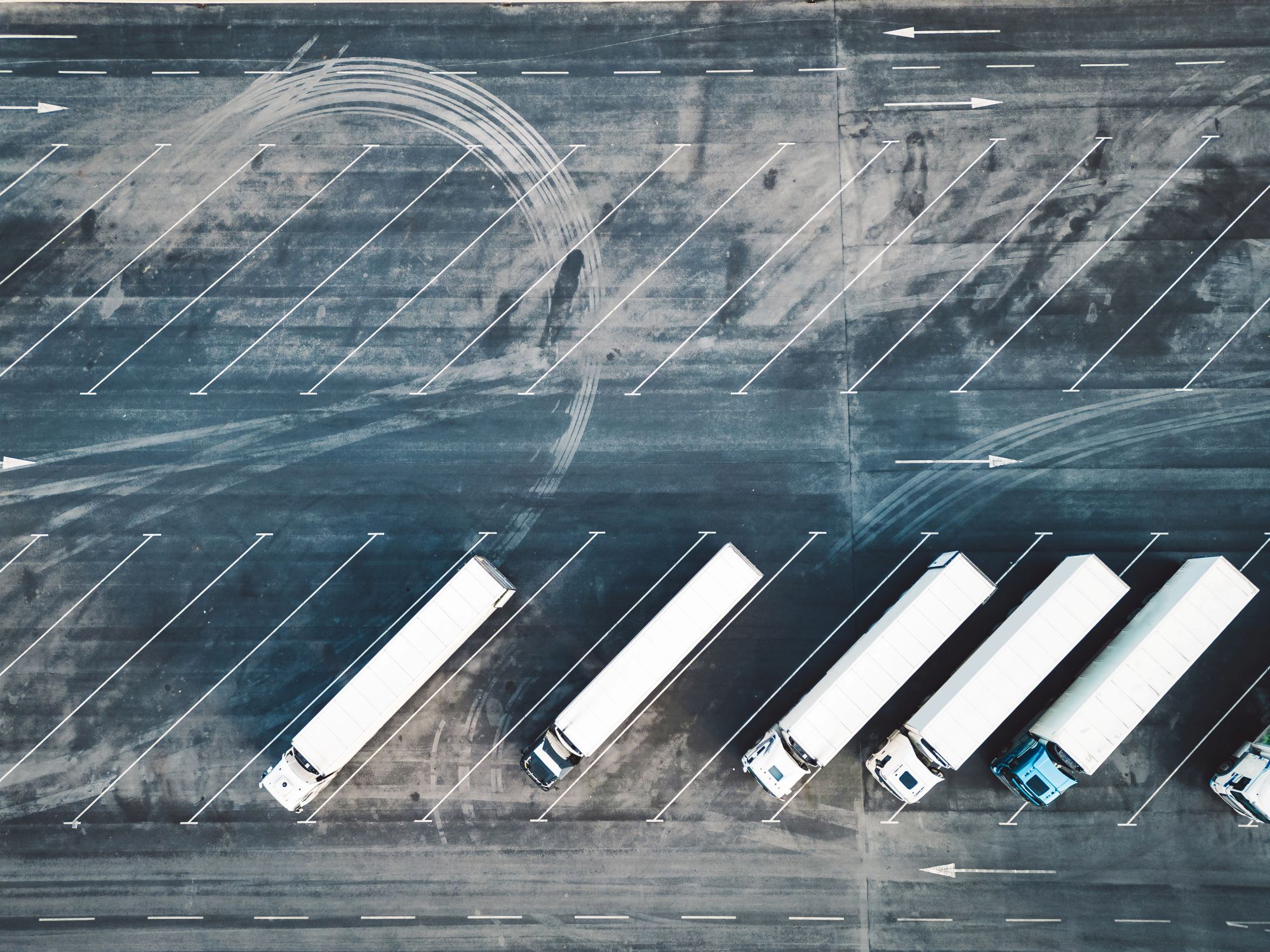
Guest
Zone cu emisii reduse în Spania: Ce trebuie să știe operatorii de flote
Creat: 03.10.2025
•
Actualizat: 08.10.2025
Până la sfârșitul anului 2025, 149 de orașe spaniole - de la Madrid și Barcelona la centre turistice precum Valencia, Alicante și Benidorm - vor restricționa accesul vehiculelor cu emisii ridicate. Pentru operatorii de flote, aceasta înseamnă noi riscuri de conformitate, modernizări costisitoare și programe de livrare mai stricte.
Zonele cu emisii reduse (Zonas de Bajas Emisiones, sau ZBE) din Spania fac parte dintr-un efort european mai amplu de îmbunătățire a calității aerului și de reducere a emisiilor din transporturi. Zonele funcționează deja în marile orașe ale țării și sunt aplicate cu amenzi de până la 200 EUR, normele variind de la oraș la oraș.
În acest ghid, explicăm cum funcționează ZBE, ce categorii de vehicule sunt afectate și ce trebuie să facă operatorii pentru a-și menține flotele pe drum.
Reguli ZBE și categorii de vehicule
ZBE sunt introduse în temeiul legislației spaniole în orașele cu peste [50 000 de locuitori] (https://transporteprofesional.es/noticias-actualidad-transporte-logistica/transporte-de-mercancias/zonas-de-bajas-emisiones-impacto-y-desafios-para-el-transporte-profesional) (și în cele cu peste 20 000 de locuitori cu o calitate a aerului deosebit de slabă), pentru a îmbunătăți calitatea aerului urban și pentru a sprijini obiectivele UE privind clima.
Accesul la o ZBE este determinat de insigna de mediu (distintivo ambiental) a vehiculului, eliberată de Direcția Generală a Traficului (DGT) din Spania.
Categoriile sunt:
Zero (Blue badge):
Acces complet
● Vehicule 100% electrice (BEV)
● Vehicule cu pile de combustie pe bază de hidrogen (FCEV)
● Hibrizi plug-in cu autonomie electrică de cel puțin 40 km
Eco (insignă verde/albastră):
Acces în general nerestricționat
● Hibrizi standard (HEV)
● Hibrizi plug-in cu autonomie electrică mai mică de 40 km
● Vehicule alimentate cu gaz (CNG/LNG/LPG)
C (insignă verde):
Acces cu unele restricții de timp/zonă
● Vehicule pe benzină: Euro 4/5/6 (de obicei începând cu 2006)
● Vehicule diesel: Euro 6 (de obicei începând cu 2014)
B (insignă galbenă):
Din ce în ce mai restricționat, adesea interzis în timpul orelor de vârf
● Vehicule pe benzină: Euro 3 (de obicei 2000-2005)
● Vehicule diesel: Euro 4-5 (de obicei 2006-2013)
Fără insignă:
În general interzis în toate ZBE
● Vehicule pe benzină sub standardele Euro 3
● Vehicule diesel sub standardele Euro 4
Vehiculele pe benzină sub standardele Euro 3 și cele diesel sub standardele Euro 4 sunt, de obicei, interzise în ZBE, deși restricțiile variază în funcție de oraș.
Este important să rețineți că vehiculele străine trebuie să se înregistreze la primăriile locale înainte de a intra într-o ZBE, chiar dacă îndeplinesc standarde Euro echivalente. Fără înregistrare, vehiculele conforme se pot confrunta cu amenzi automate, ceea ce a devenit o problemă comună pentru transportatorii internaționali care operează în Spania.

Zone afectate de ZBE
Madrid și Barcelona au instituit ZBE-uri de mai mulți ani, cu reguli foarte specifice și zone de acoperire extinse. Până la sfârșitul anului 2025, sistemul se va extinde pentru a acoperi 149 de orașe, inclusiv orașe mai mici și destinații turistice precum Benidorm, Valencia, Sevilla și Alicante.
Unele orașe sunt încă în curs de implementare sau de aplicare treptată a zonelor lor, cu perioade de tranziție în vigoare (de exemplu, avertismente până la sfârșitul anului 2025 în Valencia și Benidorm). Altele, cum ar fi Málaga, vor începe să amendeze vehiculele neconforme începând cu decembrie 2025.
Trebuie remarcat faptul că orașele pot avea reguli diferite, unele permițând vehicule neconforme pentru servicii esențiale, astfel încât este important să cunoașteți regulile unui anumit oraș înainte de a trimite un vehicul.
Spania nu este singura: peste 320 de orașe din Europa aplică în prezent LEZ-uri, printre cele mai cunoscute fiind sistemul Crit'Air din Franța, Umweltzonen din Germania și ULEZ din Regatul Unit. Pentru transportatorii transfrontalieri, acest lucru creează un mozaic de norme, autocolante și sancțiuni care cresc riscurile și costurile de conformitate.
Ce trebuie să facă operatorii de flote
Trebuie să vă asigurați că vehiculele dvs. prezintă ecusonul DGT corespunzător sau sunt înmatriculate dacă sunt înmatriculate în străinătate.
Amenzile pentru nerespectarea normelor sunt stabilite în general la 200 EUR pe încălcare, deși pot varia în funcție de municipalitate. Orașe precum Madrid și Barcelona au început deja să emită aceste sancțiuni prin intermediul sistemelor de recunoaștere automată a plăcuțelor de înmatriculare (ANPR).
Probleme pentru administratorii de flote
Reînnoirea flotei și costurile
Multe companii de logistică se confruntă cu obstacole deoarece camioanele diesel mai vechi sunt acum interzise sau restricționate în orașe. De fapt, vârsta medie a flotei de marfă din Spania este de 14 ani. Aceasta înseamnă că un număr semnificativ de vehicule nu sunt conforme și trebuie înlocuite dacă transportatorii doresc să intre în ZBE.
Prețurile vehiculelor sporesc presiunea: un [camion greu electric poate costa de trei ori mai mult decât un echivalent diesel] (https://ekoenergetyka.com/blog/electric-vs-traditional-trucks-a-cost-of-ownership-comparison/#:~:text=Economic%20Competitiveness%20of%20Electric%20Trucks,cheaper%20in%20the%20long%20run:), în timp ce [camioanele cu hidrogen] (https://thundersaidenergy.com/downloads/is-natural-gas-a-competitive-truck-fuel/#:~:text=Hydrogen%20trucks%20have%20been%20proposed,and%20Hydrogen%20%E2%80%94%20across%2035%20variables.) sunt și mai scumpe.
CETM-Madrid, Confederația spaniolă a transportului de marfă, estimează că cheltuielile cumulate pentru întreprinderile de transport rutier de marfă din Madrid se ridică la aproximativ 1,3 miliarde de euro (https://transporteprofesional.es/ultimas-noticias/cetm-madrid-reclama-modificar-el-calendario-de-acceso-a-las-zonas-de-bajas-emisiones-a-los-camiones) și solicită ajustări ale termenelor limită și mai mult sprijin.
Comprimarea timpului
Datele arată că schimbările au un impact asupra graficelor de livrare. Un sondaj recent realizat în rândul întreprinderilor din zonele pilot a arătat că [36,7% au raportat termene de livrare mai lungi și costuri de expediere mai mari] (https://www.jiem.org/index.php/jiem/article/download/6902/1089).
De asemenea, aglomerația este frecventă în timpul ferestrelor de livrare restricționate (8-10 dimineața), când mulți operatori concurează pentru acces. Aproximativ [83% dintre întreprinderile intervievate] (https://www.jiem.org/index.php/jiem/article/download/6902/1089) au menționat, de asemenea, lipsa unor zone adecvate de încărcare/descărcare drept un factor major care contribuie la întârzieri.
Acest efect de "comprimare a timpului" - în care livrările sunt forțate să se desfășoare în mai puține ore - creează blocaje la perimetrele zonelor, crescând probabilitatea de sosiri întârziate și de întrerupere a lanțurilor de aprovizionare.
Presiuni asupra personalului
Perturbarea programului se extinde dincolo de rutarea vehiculelor și la gestionarea forței de muncă. Abordarea Barcelonei față de ZBE ilustrează provocarea: orașul oferă sloturi de livrare de noapte de două ore (21:00-07:00) pentru a reduce aglomerația din timpul zilei, dar acordurile de muncă spaniole prevăd că plata muncii de noapte are prime de aproximativ 25%.
Acest lucru creează o alegere dificilă pentru operatorii de flote: să accepte aglomerația și întârzierile din timpul zilei sau să absoarbă creșterea costurilor forței de muncă pentru operațiunile de noapte.
Beneficiile de mediu ale introducerii ZBE
În ciuda provocărilor, ZBE aduc beneficii clare în materie de sănătate publică. Studiile privind LEZ Madrid Central au înregistrat [reduceri semnificative ale dioxidului de azot] (https://eurocities.eu/latest/madrids-lez-clears-the-air/) (NO₂) în interiorul zonei. Cercetări europene mai ample arată că emisiile de funingine au scăzut cu până la [47% și particulele ultrafine cu 56% în urma implementării zonelor LEZ] (https://urbanaccessregulations.eu/low-emission-zones-main/impact-of-low-emission-zones).
Aceste reduceri se traduc direct în îmbunătățirea calității aerului, reducerea numărului de boli respiratorii și a numărului de internări în spital. Pentru locuitorii din mediul urban - și pentru șoferii care petrec ore întregi în traficul aglomerat - beneficiile pentru sănătate sunt tangibile, deși incomode.
Sprijinirea șoferilor și operatorilor din întreaga Europă
"Zonele cu emisii reduse sunt aici pentru a rămâne", comentează Raqual Martinez, director de vânzări european la SNAP. "Provocarea pentru comunitatea noastră este adaptarea fără a compromite eficiența sau bunăstarea șoferilor. La SNAP, ne angajăm să sprijinim flotele din Spania și din întreaga Europă, ajutându-le să transforme schimbările de reglementare în avantaje operaționale."
Deși nu putem schimba regulile LEZ, aplicația noastră intruck face viața pe drum mai simplă. Șoferii o pot folosi pentru a găsi și a rezerva parcări și spălătorii sigure pentru camioane, pentru a vedea ce facilități sunt disponibile în fiecare stație și pentru a planifica pauze de odihnă care să se potrivească cu ferestrele de livrare mai restrânse - indiferent dacă ajung în Madrid, ocolesc Barcelona sau trec granițele pe rute mai lungi.
Descărcați intruck app astăzi pentru operațiuni mai ușoare în peisajul în continuă evoluție al transporturilor din Spania.



